The Renaissance and its Commerce
During the Renaissance period, the italian region, and Venice in particular, were a great economical powerhouse, due to its privileged location that favored trade routes by sea. Valuable items were negotiated by only a few traders - precious gems were a rare sight.

For most of the Renaissance, the city of Venice would receive goods by sea and export them to the rest of Europe. This process turned Venice into a maritime power in the Mediterranean region.
Its in this setting that Splendor takes place!
Splendor - Game Info
Splendor is a 2-to-4 players game, age 10+, created by designer Marc André. Game Art by Pascal Quidault.
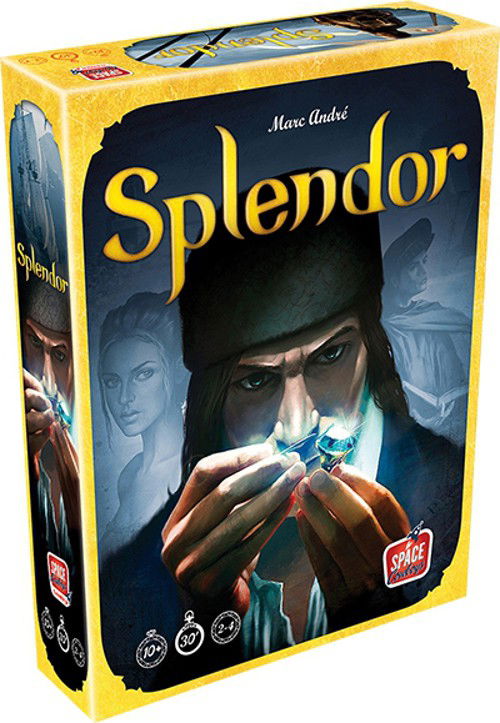
Splendor was released in 2014 by Space Cowboys, and was released in Brazil in 2015, by Galápagos. The main mechanics are: collecting sets, planning purchases, making deals and quick-thinking.
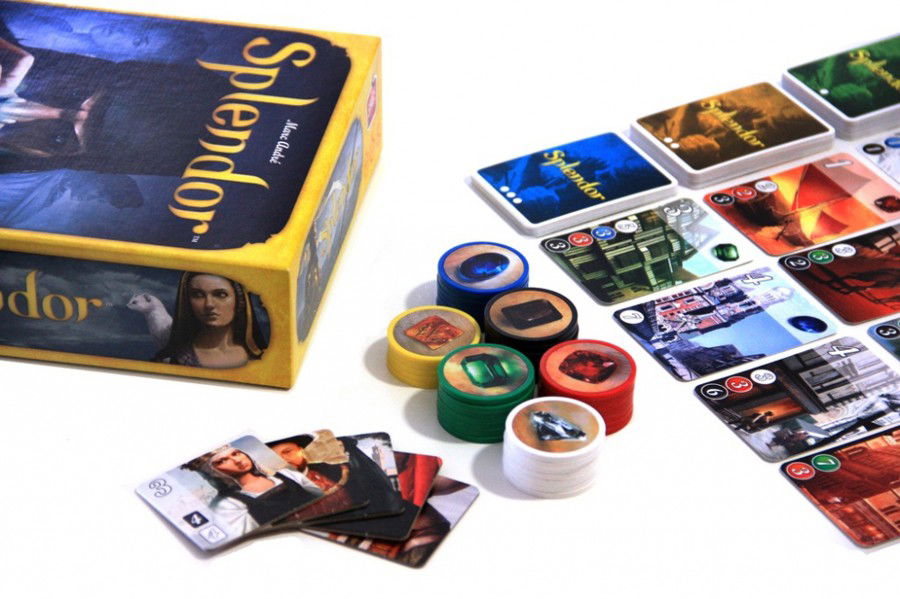
Since release, Splendor has received several nominations and awards. Some highlights include: Board Game Quest Awards, Golden Geek, Meeples Choice Award, among many others, including the renowned Spiel des Jahres.
Let’s play!
The Game
The Renaissance period. We are wealthy merchants, and with our resources we will explore mines, hire artisans to cut the rough stones, and then transport and sell them - all in the pursuit of greater prestige.
Once news of our trades become public, we may receive visits from nobles, which will grant us even more prestige.
However, this will not be so simple, as we will compete for this attention with other gem merchants.
This is the background for Splendor!
As traders, the path from mining gemstones to selling them in the market is a long one. We’ll need to acquire cards that represent mines, artisans, transportation, and our shops. This will provide us with more gemstones, and some also grant prestige points — essential to win the game and the heart of the Nobles.
Let's understand the dynamics of the game:
Gems can be of 6 types, each with a different color:
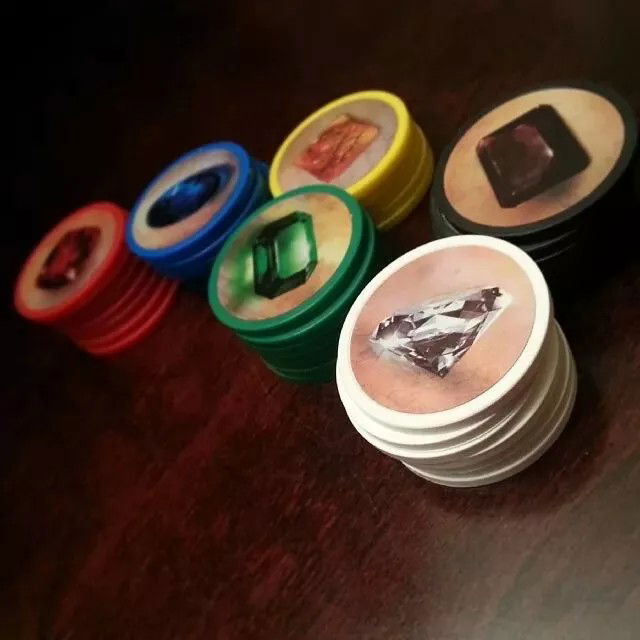
The Noble Tiles are placed depending on the number of players - 1 more than the total. For example: in a game with 4 players, place 5 Noble Tiles. Each Noble acquired grants 3 points to the player.

Finishing the setup, place the development cards in the center of the table. By acquiring them, you get gems. The cards are arranged in 3 rows, according to their level:
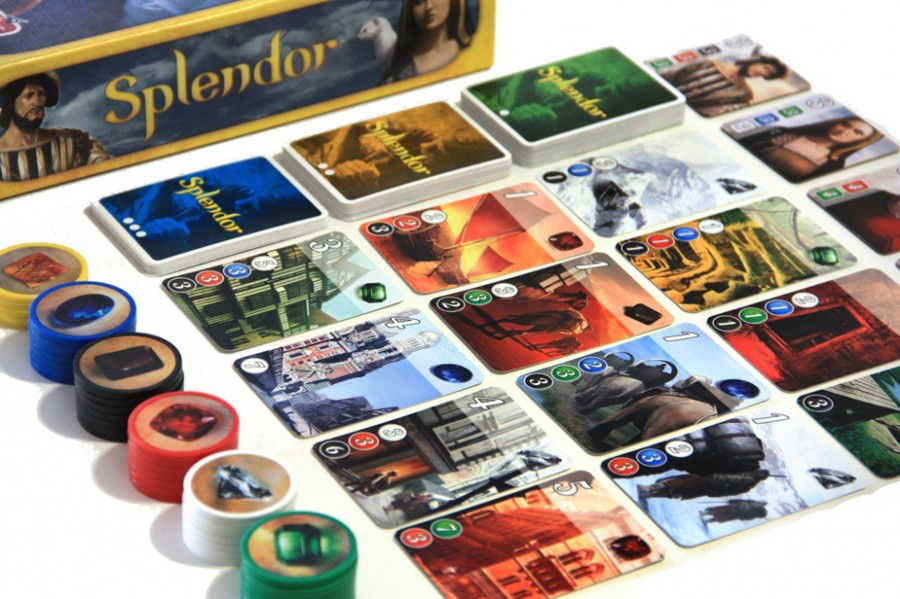
On each players’ turn, they choose one of 4 possible actions:
table or a previously reserved one.
Each action has some requirements - for example, if you choose to take 3 different gem tokens, you must observe the 10-token limit - the maximum allowed per player.
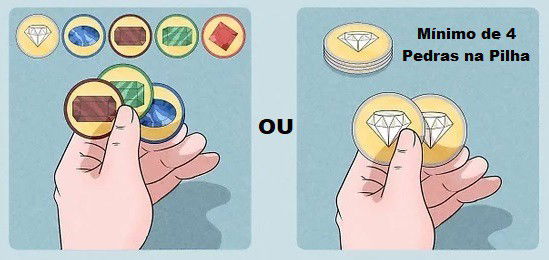
To take 2 of the same gems, there must be at least 2 more of that gem left afterwards, or you can’t use this action. Also, you still have the 10-token limit.
Reserving a development card is highly strategic. It can be used to secure an important card, or a rare gem. It’s also the only way to acquire gold tokens, which work as jokers. Two things to remember::
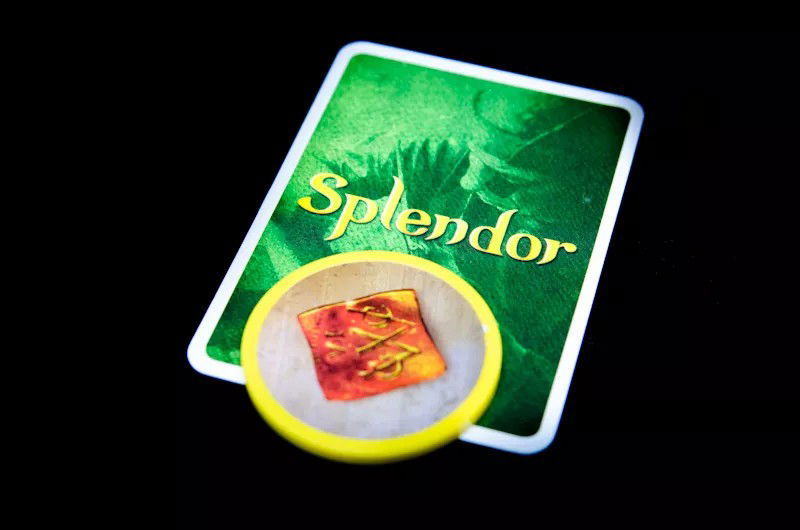
You can also use this action just to stop other player from acquiring a specific card - especially when it looks like they’re saving gems for it.
Finally, you can purchase a development card. It can be a card that is face up on the board or a previously reserved one. Just pay the indicated price with your gem tokens and its yours.
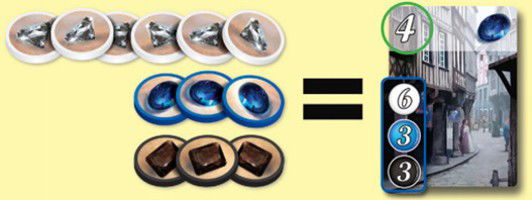
Once you buy it, development cards will grant you gems that aren’t included in your 10-tokens limit. You can use them to pay for other purchases - it basically becomes a constant resource for you.
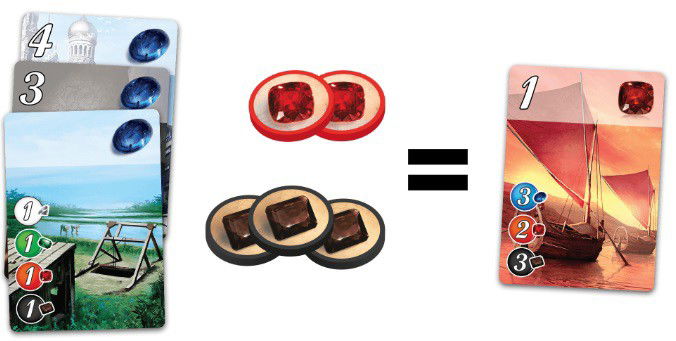
Some development cards will grant you prestige points - these are the game 's win condition. Also, having same-gems development cards will attract the Nobles - it’s the only way for them to notice you.
Each Noble has a different requirement, which you can read on its tile. Unlike development cards, Noble won’t care for gem tokens - only gems on the development card themselves that you bought.
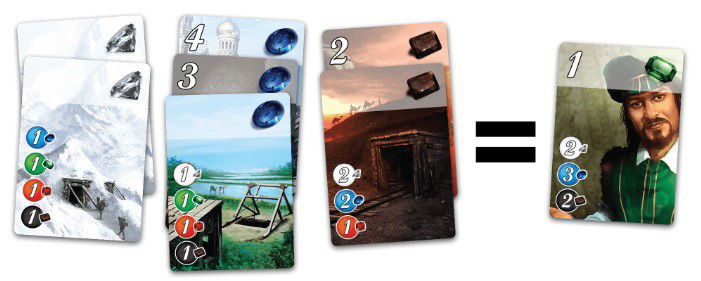
Once you meet the requirements of a Noble Tile, place it in front of you and immediately gain its prestige points. This doesn’t count as an action for the turn.
Once you’re done, play continues with the player to the lef.
This is a turn of Splendor!
Ending the Game
When a player reaches 15 prestige points, complete the current round so that each player has played the same number of turns.
The player who then has the highest number of prestige points is declared the winner - don’t forget to count your nobles! In case of a tie, the player who has purchased the fewest development cards wins.
Strategy Tips
Splendor revolves around its 4 actions. They are simple to grasp, but deep in strategy.
The game can be punishing for those who just start to pick up random gems. The golden rule is: collect gems that will help you buy a development card you want, because you need them to win over the Nobles.
So you should choose between 3 different gems or 2 of the same according to your desired development card and the number of gems in the pile. Remember, you can only pick 2 of the same gem if there are 4 or more in that pile.
When picking up gems, think ahead — especially if you notice that a certain color is becoming scarce. Try to “read the game” so you can prepare the best possible combination.
Reserving development cards is essential, especially the Level 3 cards, which are the most valuable. Even if you can't buy them right away, it's worth reserving them, since doing so gives you a gold token. Remember that you can only reserve at most 3 development cards.
When it comes to buying development cards, it's obvious that Level 1 cards have the lowest cost and are the easiest to purchase. However, they offer few or no prestige points. Even so, they provide resources that help buying other cards and also contribute to winning the Nobles. Invest, but don't waste too much time on them. When you realize that you have enough and that you don't depend so much on the gem tokens from the piles, it's time to invest in Level 2 and 3 cards.
An important tip — but a bit of a dirty one — is to keep, among your 10 gem tokens, a particular color that everyone needs. In other words, dominating one or two colors can allow you to both play and, at the same time, stall your opponents’ game. If you can do this for a few turns, you can significantly delay their plans.
Always keep an eye on the Nobles, because a player can suddenly win over one or two of them at once. This is a 3 to 6 prestige point swing, and can trigger the end of the game. Keep an eye on this. Always try to acquire development cards that meet the requirements of one or more Nobles, if possible. This makes all the difference!
Be the best strategist and win in Splendor!
Unboxing, Rules and Gameplay Videos
Unboxing:
Rules:
Gameplay:
Pedagogical Tips
Splendor is an excellent way to stimulate your children's concepts of resource management, strategy, and logical-mathematical thinking in a fun way.
Throughout the game, you need to manage your gems and development cards.
Strategy comes into play when you acquire gems thinking about what you want to buy in the future — especially when you reserve a card.
Logical-mathematical reasoning comes into play when you need to understand that you need to save, and then spend, all in exact quantities, but always thinking a few steps ahead.
In Splendor, all of these concepts and stimuli happen in a light, almost imperceptible way — and a fun one!
From an educational perspective, Splendor stimulates and entertains!
I recommend Splendor on your collection!








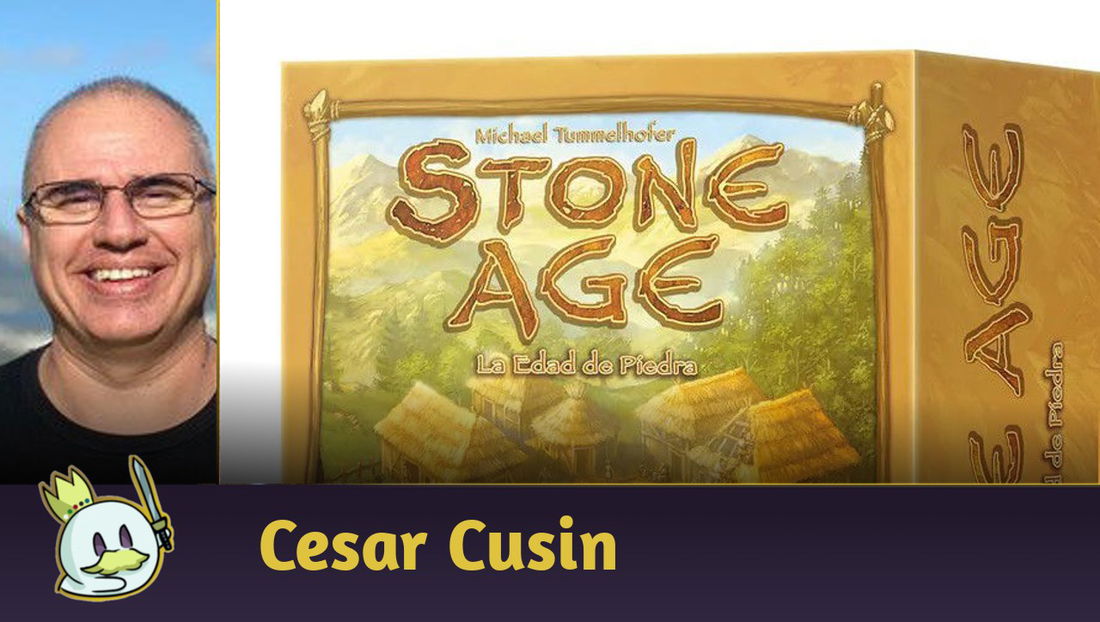




— 评论 0
, 反应 1
成为第一个发表评论的人